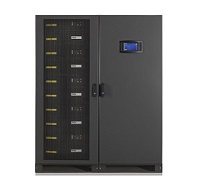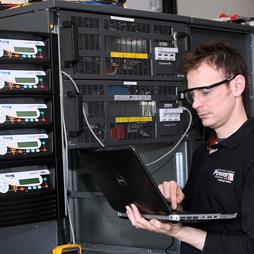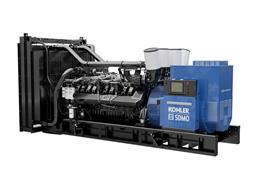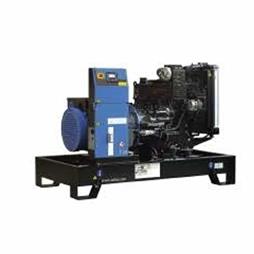UPSs for data centres - highly efficient with low total cost of ownership
14-10-2014
Whether they’re supporting a localised operation, or an enterprise installation with over 500 servers, data centre UPS costs contribute significantly to their owners’ capital and operating budgets. So although the UPSs’ critical role demands investment in the best quality products and services, maximising their cost-effectiveness is also essential; a small improvement can have a large impact on the bottom line.
This is a total cost of ownership issue; the right UPS equipment, operated efficiently, can reduce both capital and operating costs. Key considerations for a candidate UPS system include its efficiency over the expected operating load range, whether it can be run in Eco-mode, its input power factor quality, and its scalability to meet current and future load demands. These factors apply to UPS installations of all sizes, as the following examples show.
Very large scale UPS systems of up to 5 MVA can be configured using Uninterruptible Power Supplies Ltd’s (UPS Ltd’s) PowerWAVE 6000 Series. This has a load-independent high operating efficiency, achieving 95% - 96% for 25%-100% loading. A 1% efficiency improvement on a 100 kVA load over a year would save £7691, based on 100% loading at 95% efficiency. Eco-mode allows further improvement, providing up to 98% efficiency over the entire load. The quality of the utility mains supply, and of today’s data centre ICT equipment, renders Eco-mode suitable for many installations, while cost savings are considerable. Switching to Eco-mode on a 100 kVA load would save an additional £15,922 in operating costs, assuming a 2% improvement in efficiency.
The PowerWAVE 6000’s high operating efficiency also brings indirect savings, by reducing heat loss and therefore air conditioning costs. Another factor is the UPS’s near-unity input power factor of 0.99 at 100% load. This level minimises the reactive current drawn from the utility supply, avoiding unnecessary meter and possibly penalty charges, as well as excess loading on the data centre’s power cabling and switchgear.
Additionally, the PowerWAVE 6000’s design allows minimisation of capital expenditure. It is available in 60 – 500 kVA building block units, so a minimum-cost and -size initial installation can be incremented as the data centre load grows. No Installation and upgrade costs, or data centre space, are wasted on unnecessary UPS capacity.
Similar capital and operating cost savings are available to smaller installations using the PowerWAVE 9000DPA Series. This offers 10, 20, 30, 40 or 50 kVA modules which are easily rack-mounted into a single frame, allowing UPS capacity to be ‘hot-swap’ incremented. Each frame can accommodate up to 200 kVA with N+1 redundancy, and frames can be paralleled for up to 1 MVA capacity with N+1 redundancy. This ‘right-sizing’ allows capital expenditure, installation costs and space requirements to be minimised. At 100% load, the power factor remains near unity at 0.99, while a 250 kVA PowerWAVE 9000DPA with a nominal efficiency of 95% would save £19,026 per year from a 1% efficiency improvement. Overall, a PowerWAVE 9000DPA unit operates at 95.5 to 96% efficiency for 25 – 100% loads.
Through UPS Ltd, these cost-saving benefits extend to low-medium power high-density applications with the PowerWAVE 8000DPA, which offers incrementally scalable capacity to 100 kVA with N+1 redundancy. Efficiency is 94.5%-95.5% at 25-100% load, and input power factor is 0.99 at full load. For a 60 kVA installation at 100% load and nominal 95% efficiency, a 1% efficiency improvement yields £6,885 savings per annum.
UPS’tds PowerWAVE range – 6000, 8000DPA, 9000DPA and 9500DPA together offer highly-efficient solutions for data centres of all sizes. Their high efficiency over wide load ranges, and near-unity power factors, ensure minimal operating costs, while their scalability minimises initial and ongoing capital expenditure.Visit the Kohler Uninterruptible Power website for more information on UPSs for data centres - highly efficient with low total cost of ownership






